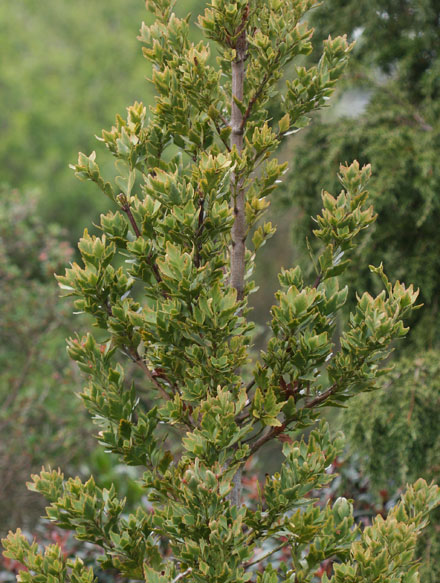
Celery Top Pine
The Tasmanian State Government has been accused of having another go at whipping up forest conflict before the election via the draft special species management plan. Sources: The Mercury, ABC News
The plan, created in consultation with the sector, sets out areas where special species may be harvested, across a variety of land tenures including some reserves.
Public submissions on the plan closed. Environmentalists and the State Government have offered differing interpretations on whether the plan will allow logging in reserves.
While the Government says further legislation is needed to allow logging in the areas, the environmental movement says logging will be able to take place as soon as the plan is signed off.
In the Greens’ submission on the plan, addressed to Environment Minister Matthew Groom, leader Cassy O’Connor said the plan would undermine the integrity of Tasmania’s reserves system by allowing logging in conservation areas and regional reserves.
“Given the deficits of the draft plan, and its obvious political purpose, we share a widely-held view in the community that the move to allow logging inside the Tasmanian Reserve Estate is a deliberate attempt to create division over forests in the lead-up to a state election,” Ms O’Connor said.
She said the Greens did not believe the “majority of fair-minded Tasmanians” supported logging inside reserves.
Resources Minister Guy Barnett said the areas in question could have been logged under the former government’s peace deal.
“This is yet another case of incredible hypocrisy from the Greens, who voted to allow special timbers harvesting in the same areas using the same methods as part of their so-called peace deal,” Mr Barnett said. “The Greens are as usual changing the goalposts to try and lock up more of the state.”
Tasmania’s special timbers industry is hopeful a new management plan will revitalise the sector, but environmentalists say the Government is allowing rainforests to be logged using untested harvesting methods.
For the first time, there is a clear picture of the volumes of celery top pine, blackwood, myrtle and sassafras that can be accessed throughout the state’s formal and informal forest reserves.
It identifies more than 14 million cubic metres of timber, and sets out the governance of its logging.
In a submission to the government, the Wilderness Society has raised concerns with the harvesting techniques outlined in the plan.
The plan refers to three “commonly used” methods for harvesting special species that aim to minimise the impact on the environment — selective removal, over-storey retention and group selection.
Vica Bayley, Wilderness Society spokesman, said it was misleading for the Government to refer to them as commonly used practices. In an email exchange with Mr Bayley seen by the ABC, Sustainable Timber Tasmania (formerly Forestry Tasmania) confirmed there were no records of contemporary harvesting plans using the techniques listed in the draft plan.
The Government said they were approved harvesting methods but did not deny they had not been used for at least five years.
The plan allows harvesting in regional reserves and conservation areas, and in the 356,000 hectares of informal reserves the government attempted to allow logging in earlier this year.
Resources Minister Guy Barnett said the harvesting rules were the same as those set out in the now defunct forest peace deal.
Boat builder and special species user Andrew Denman said the plan was important because special species trees were grown in areas that would no longer be logged by Sustainable Timber Tasmania.
He hopes it will revitalise the industry, which has struggled to source timbers.
“If we want a future we have to go down a separate path, a path of treading widely but lightly, on a sustainable basis,” he said.
Mr Denman said harvesting techniques would be determined on a case-by-case basis.
“In many cases they have been trialled and tested, and certainly the harvesting methods have been based on trials,” he said. “Any harvesting method that’s being trialled must be very specific to the species, the location and the soil types to ensure these species are there in perpetuity and that they grow back successfully.”
Mr Denman said it would be affordable for the industry.
“Obviously we’re not going to enjoy the subsidies that have been involved in the past; this will all be done by private enterprise,” he said. “In a lot of the areas that have been identified there is existing infrastructure, such as roads and bridges, so as far as extraction goes … it will be cost efficient and there will be money to be made for harvesting contractors.”
While it’s unclear how much the industry is worth to the state, the plan estimates that it generates $70 million each year, and employs about 2000 people full time. Almost 10,000 Tasmanians are said to be special species “hobbyists”.
Over the past 10 years, production has declined by 55% due to accessibility.





